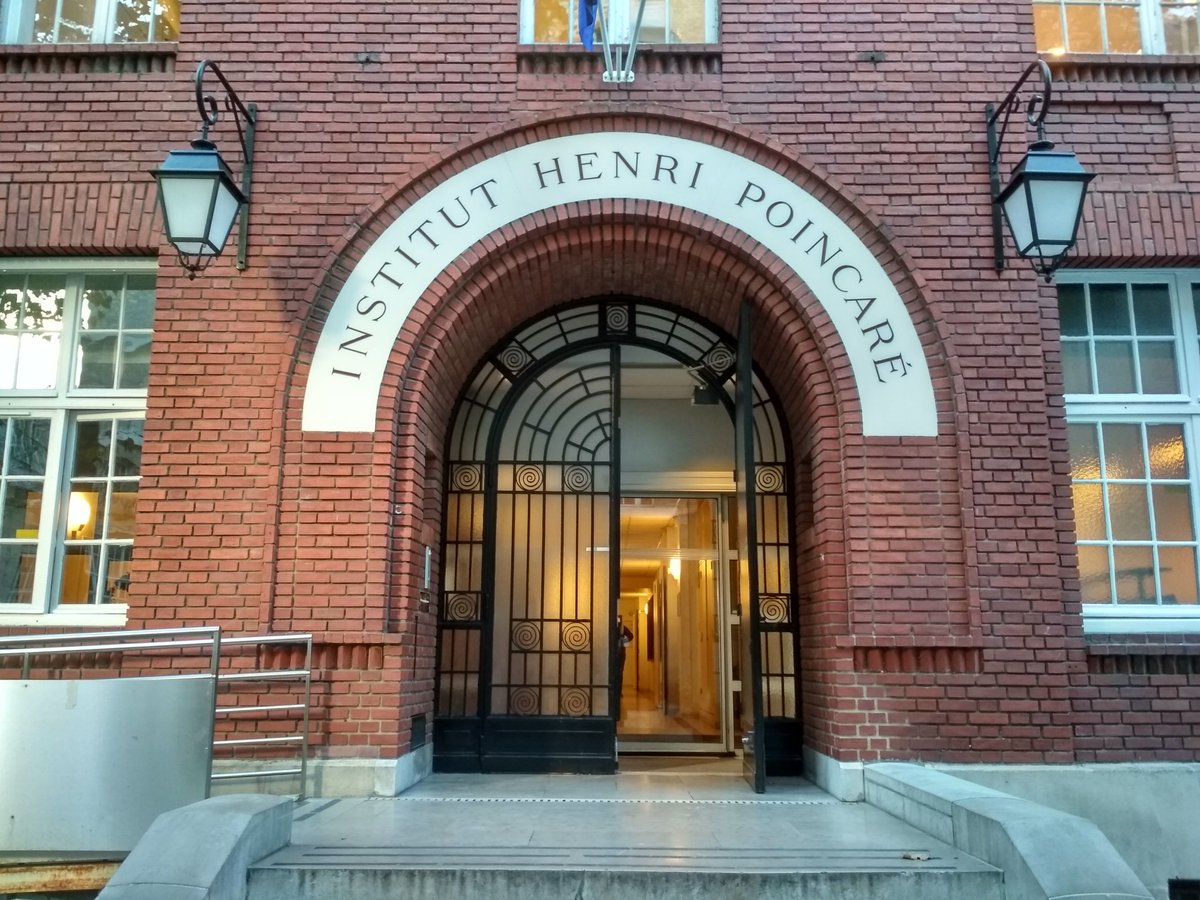#LTQI
Looks at a classical patchinko, with classical balls. The input output relations can be defined by a stochastic matrix M.
For example, Prob(one ball/input slot → one ball/output slot)=det(M)
#LTQI
#LTQI
More generally, for different photon pattern transition S→T , S=(s₁,s₂…s_n), sₓ being sₓ photons in mode x, we define submatrix M_ST with row(column) x repeated sₓ (tₓ) times,
P(S→T)=perm(M_ST)|²/S!T!
with S!=s₁!s₂!⋯s_n! and same for T
#LTQI
∏ₓ âₓ⁺^sₓ/√sₓ!
(he actually uses x and/or y as variable, but as a physicist, I know they stand for creation operators)
A n photon state is a degree n polynomial
#LTQI
The dip basically comes from the symmetry of identical particles.
It translates in polynomial as xy=yx, while x⊗y≠y⊗x. Actually, with photons, one should use x⊙y=y⊙x=(x⊗y+y⊗x)/√2
#LTQI
U acts on V=ℂⁿ
ϕ_n(U) acts on ℂ^N
N= # degree n monomial in m vars
= ((n ¬ m))=(n¬ m-n+1)
¬ is my twitter notation for “over”: k choice n = (n ¬ k)
#LTQI
Input: a n×m unitary matrix
output: the probabilities of output patterns
Since the probabilities are permanent, and the permanent computing is ♯P-hard, this problem is hard
#LTQI
#LTQI
#LTQI
However, requiring exact boson sampling is unfair, given that any physical realization would be noisy.
We should look at approximate BS, with adversarial errors. But the adversary could easily ruin the probability of a special outcome.
#LTQI
#LTQI
#LTQI
Variants of PGC× known to be ♯P-complete (worst case approximate, avrg case exact)
Pick random n×n matrix A
f(t)=perm(M+tA) polynomial of deg n. f(0) can be found by interpolation with n+1 points
If Perm(random M) with P≥1-1/3(n+1), we get perm (M) whp.
Can be improved to 1/poly(n) #LTQI
#LTQI
#LTQI
#LTQI
• perm ∉ NP (unlike factoring)
• perm hard to compute
• sampling occurs over an exponentially large space
#LTQI
1) Look at small size, but not scalable
2) Rig the network : make one outcome very likely, but hide which one. This is impossible: if P>1-1/poly ⇒ block structure
#LTQI
3) Statistical verification: check the output obeys expected statistics we can compute. This is not adversary resistant, but useful to test experiments.
E.g. row norm verification: submatrix rows with large norm are likelier to output photon
#LTQI
Also look at k-fold collisions
It is checking in a regime were we don’t know whether BosonSampling is hard, but it can check the device
Other statistics : Forurier samplig methods (slit interefernce like, to force some values to be 0), generalized to linear statistics, like 5n₁–3n₂+7n₃
#LTQI










